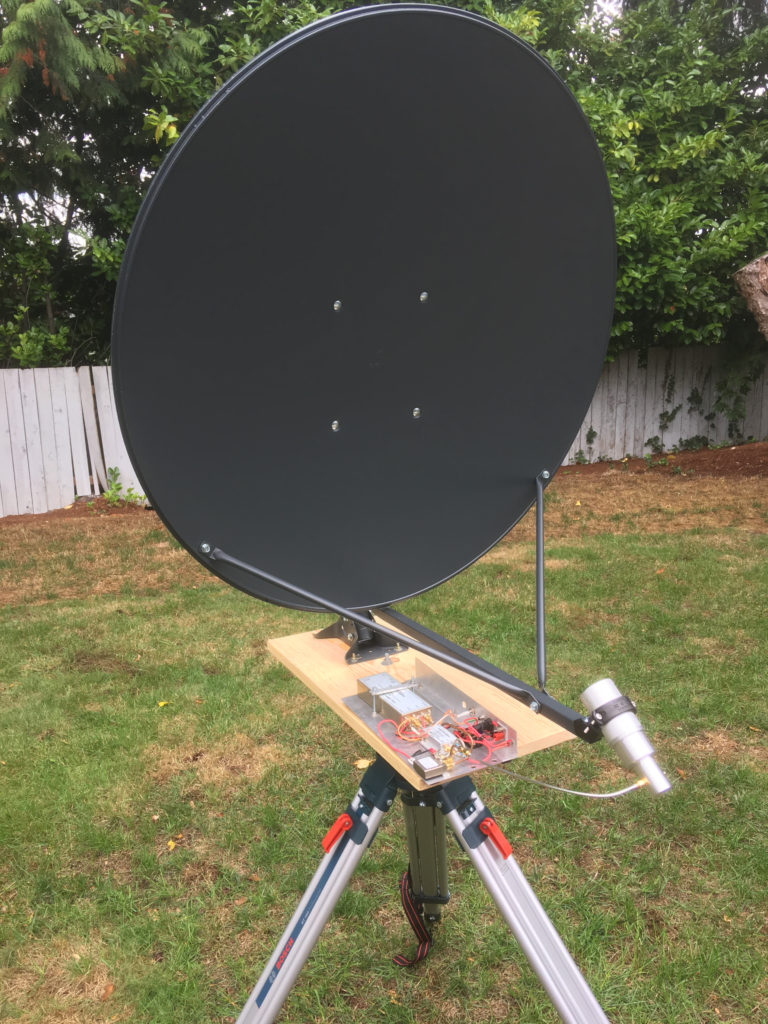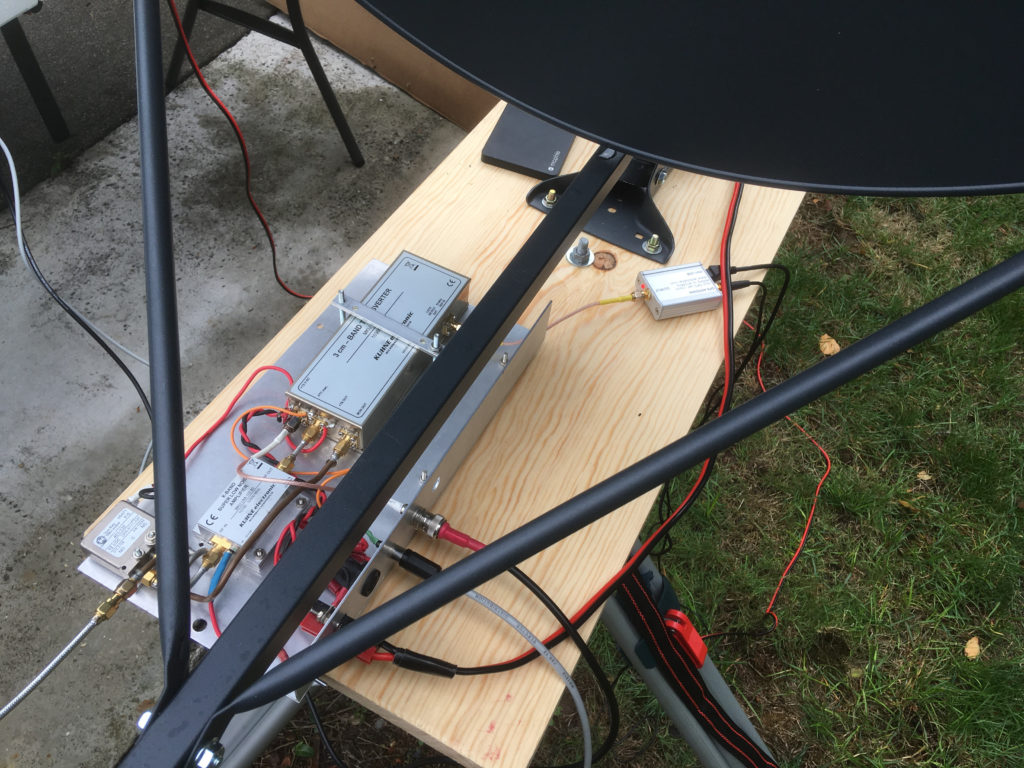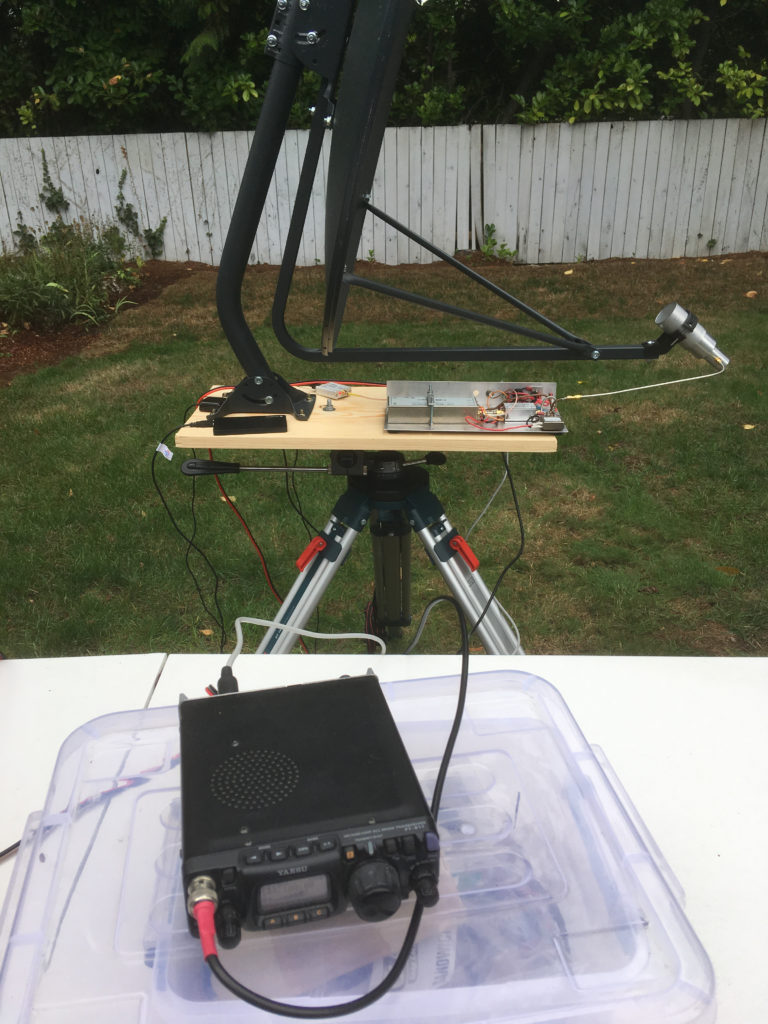Here are my slides from Microwave Update (MUD) 2025 in Tucson, AZ:
3D Printing Projects for Microwave Experimenters
I’ve published a couple of simple 3D printing projects which may be useful for others:
- Mount for the Leo Bodnar mini-GPS units:
https://github.com/xjamesmorris/bodnar-gpsdo-mount
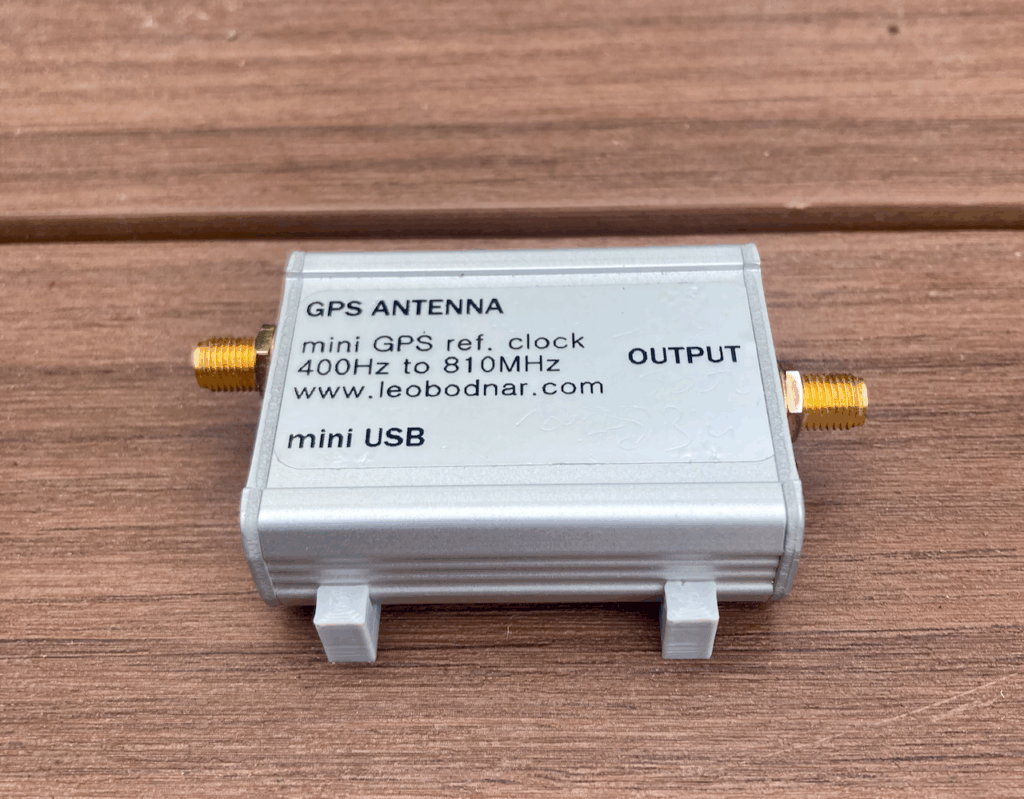
- Mount for the W1GHZ dual band (10 + 24 GHz) feed horns:
https://github.com/xjamesmorris/dual-band-10-24-ghz-feed-mount
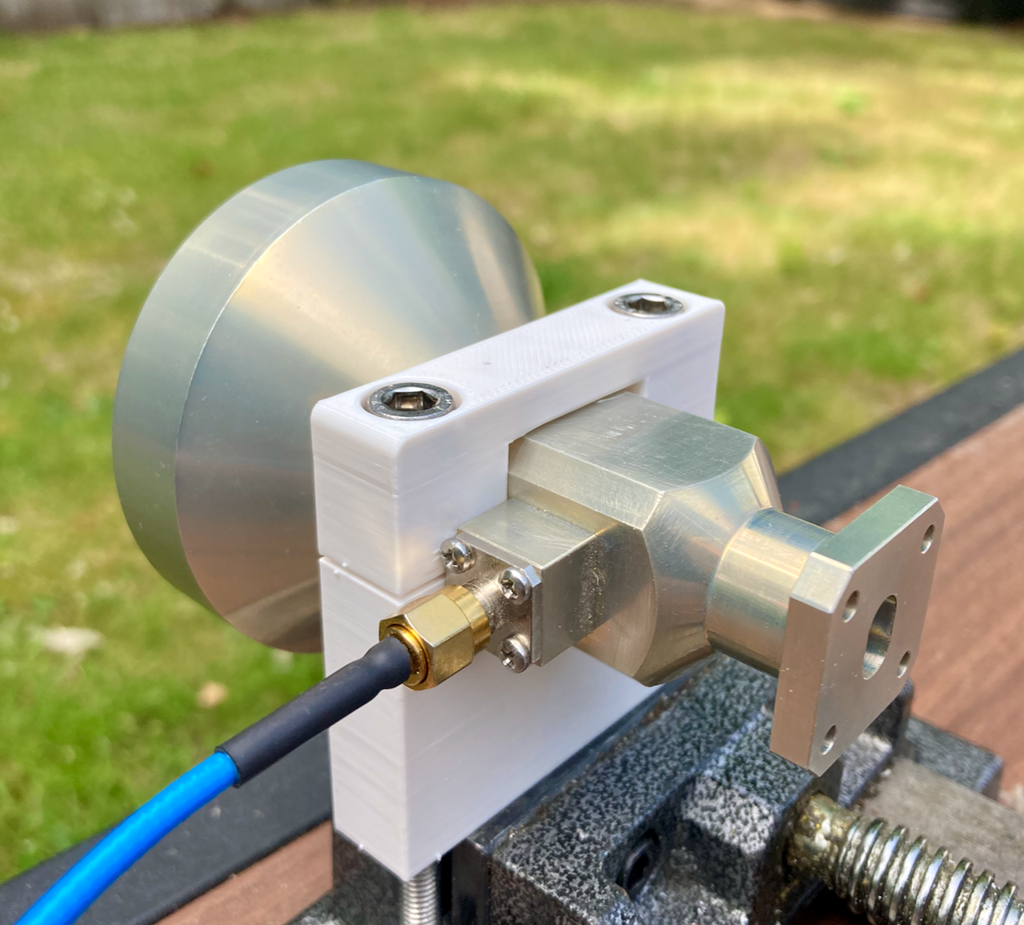
You can download the STLs and print them, or get them printed. I’ve also included the STEP files so they are easy to modify or fabricate via other methods. They’re Open Source licensed (see the repository for details).
Publications in 2024
I had a couple of papers published in 2024, which I’ll link here for reference:
- Investigating the Extended Frequency Range of the WA1MBA Millimeter Wave Quadrupler, DBUS, 2/2024. [PDF]
- Open Source Arduino Controller for Surplus Flatpack2 PSU, International EME Conference, Trenton, NJ, 2024. [Event Archive] [PDF] [GitHub]
Unfortunately, I was unable to travel to the EME conference in NJ to present the latter, and would have been in extraordinary company alongside a Nobel laureate (K1JT). While the Flatpack paper is not groundbreaking, I’m hoping it will be of practical use for people needing QRO DC power on a budget. The next EME conference is in 2026, so plenty of time to come up with something more innovative.
Regarding the mm-wave quadrupler, the gist of the paper is that the device was designed to provide output from 40-50 GHz, but its range of operation was determined to extend significantly above and below this, with useful signals produced from 27 to at least 95 GHz. Tom, WA1MBA, the creator of the quadruplers also confirmed a strong output signal on 76 GHz in his lab. The device has a Q-band microstrip filter on its output, so one open question is why it seems to not work as expected. Possibly more to come on this.
Wishing all a great 2025!
10 GHz Beacon Testing in Seattle
10 GHz mobile? Not quite – mounted my CW beacon on my truck last weekend and tested a few transmitting locations around Seattle during a microwave test & tune day.


AG6QV was able to receive my signals via reflection off Puget Sound ferries, confirmed by aiming and tracking with his dish. This is known locally as Ferry Scatter. We were trying for bounce off the Olympic mountains, but that did not seem to work in this case, with rain attenuation and likely other factors.
Now I’m thinking about a mobile-mounted 10 GHz setup for quick 2-way contacts, which could be useful for contests and experiments without the overhead of setting up tripods & transverters.
Quick thread on 3cm 25W SSPA construction with a TGA2623-CP kit
Posted on Mastodon,
Working on a 10 GHz power amp…
https://social.kernel.org/notice/Adeu5KFtWc1imfg2oS
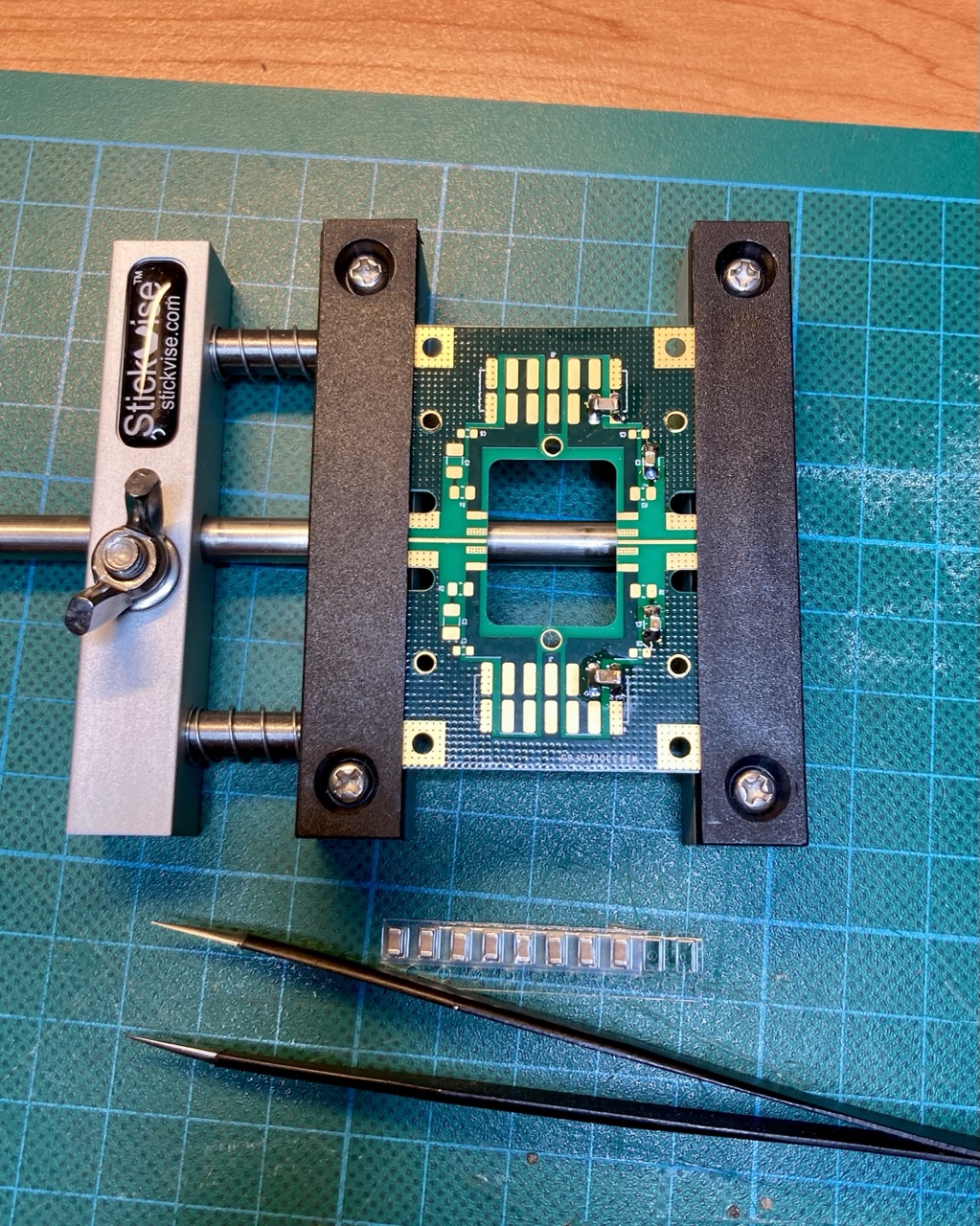
Quick thread on testing a Ka band LNB
Posted on Mastodon: https://social.kernel.org/notice/Ac3eWRlirgKRzORTeK
“Testing a Ka band LNB, specified for 20.2-21.2 GHz. I could not see any signals beyond 22.8 GHz (well short of the 24 GHz amateur band), but that could be due to issues at the IF level. Worth investigating further. I was able to see a good signals at 22.2, an important radio astronomy frequency …”
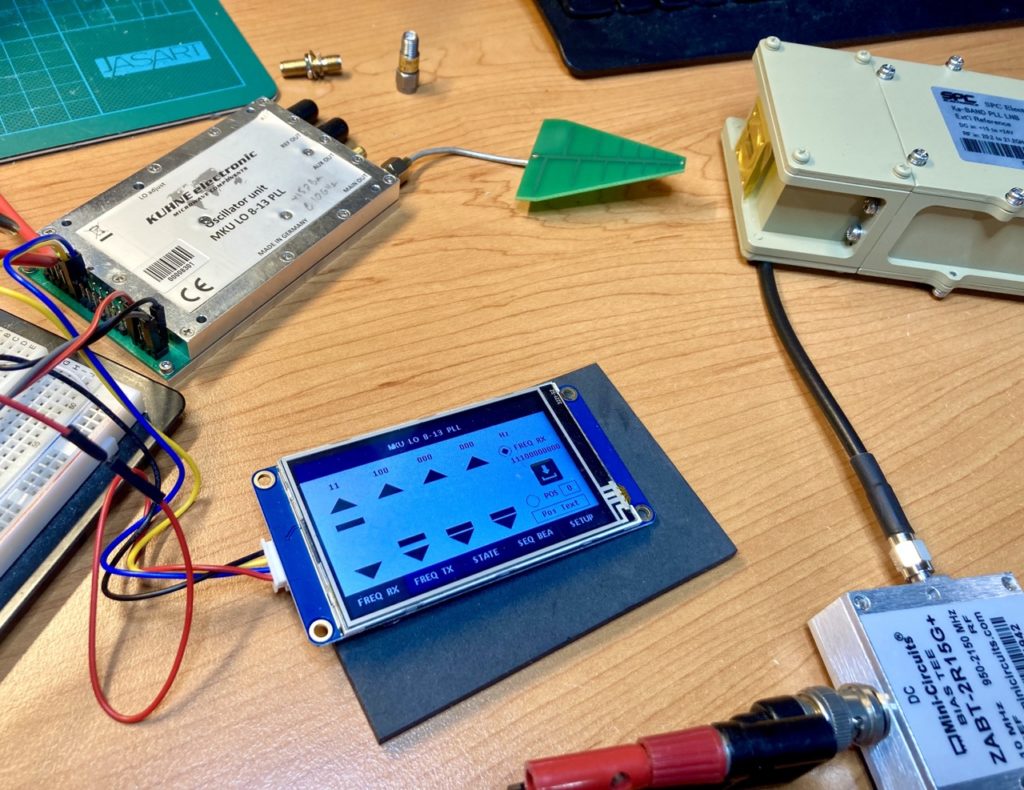
Adventures in the 8m band
Recently, in addition to 3cm projects and HF digital, I’ve been monitoring WSPR in the 8m (40 MHz) band. This an ISM band with some experimental licenses issued in the US, Canada, and other countries, as well as a few secondary amateur allocations in Europe and in South Africa. There are proposals to make this a secondary allocation in the US, at least.
This is a very low VHF band, and shares propagation characteristics with both 10m and 6m. It’s a potential indicator of Sporadic E openings on 6m, and with the good sunspot conditions lately, there’s been an uptick in folks transmitting and receiving.
You can find out more about 8m at EI7GL’s blog, which is a fantastic resource for this and many other amateur radio topics.
I started listening a couple of weeks ago with a simple wire dipole strung up in the back yard. I’ve now built an aluminum dipole which can self-support and be more readily tuned, and put up above the roof line with a shorter and better feedline. This has shown marked improvement, and I’ll keep experimenting to see what works best. It may turn out to be better further from the house, even if closer to the ground.

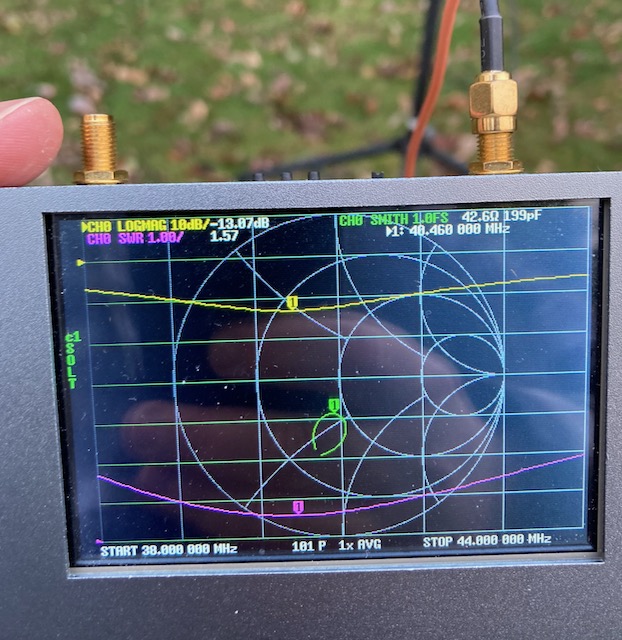
There was some great great propagation happening today between Australia/NZ and USA/Canada, on 40.68 MHz.

In the above, there’s a 15642 km report for VA2CY from VK4OTZ:
2023-03-03 22:44 VA2CY 40.681527 -11 0 FN46lw 50 VK4OTZ QG62jo 15642 284 W-2
This is just short of the current record for 8m for any mode, but I think is actually the record for WSPR on 8m.
Note:
I had been posting radio/electronics updates to Twitter instead of this blog for some years, but I’m not as active there since the ownership change and I’ll try and update this more instead.
I’m also now on the Fediverse (“Mastodon”) here: https://social.kernel.org/jmorris . There is not currently seem to a critical mass of radio & electronics experimentation folk on there, but it is growing. If you’re reading this and on there, consider adding me. The real value of this kind of social media is the network graph, so I’m adding anyone with similar interests currently to help build that.
W7TXT
2019 Spring Microwave Sprint
I had some fun on the weekend participating in the 2019 Spring Microwave Sprint. A bunch of PNW folk were out for this event, many of whom have been working on microwave system builds at a monthly meetup held by Frank AG6QV.
I met up with Frank at Three Tree Point, and set up my 10GHz rig next to his. Our goal was to bounce signals off Mt Rainier, which is visible across Puget Sound from there.
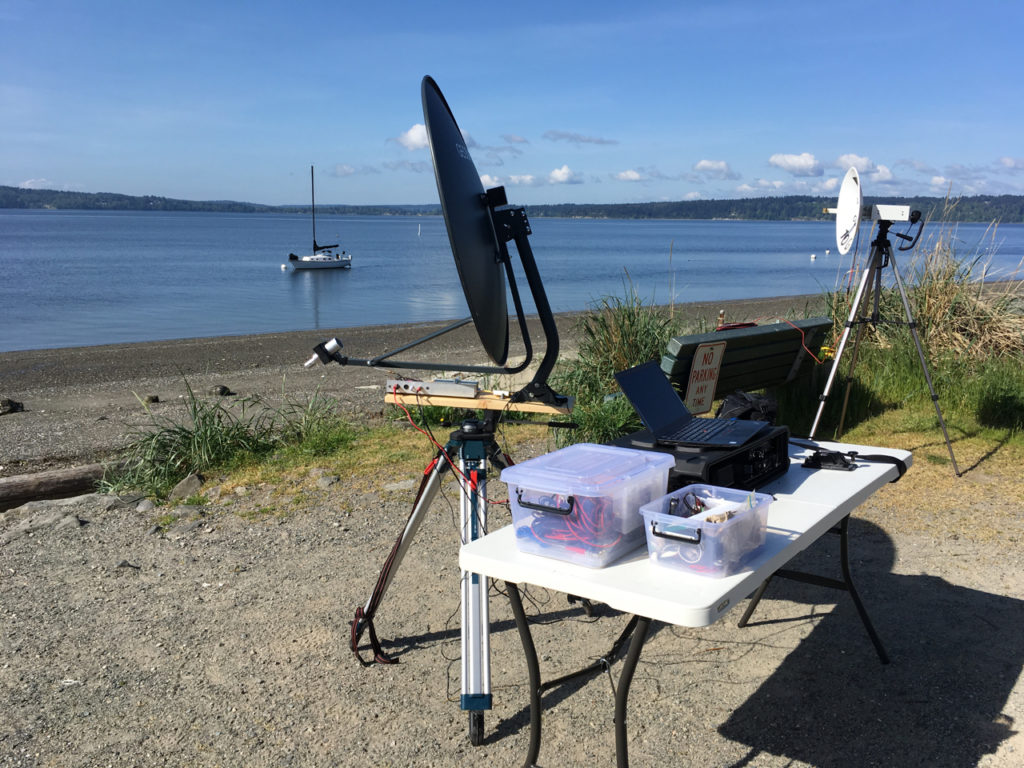
Once the other stations in the region were up and running on 10GHz, we were both able to make easy SSB voice contacts with Ray W7GLF, who was located in the Kirkland WA area, and also pointing at Mt Rainier.

We also heard Dale KD7UO on CW (located closer to the mountain) but were unable to establish a contact.
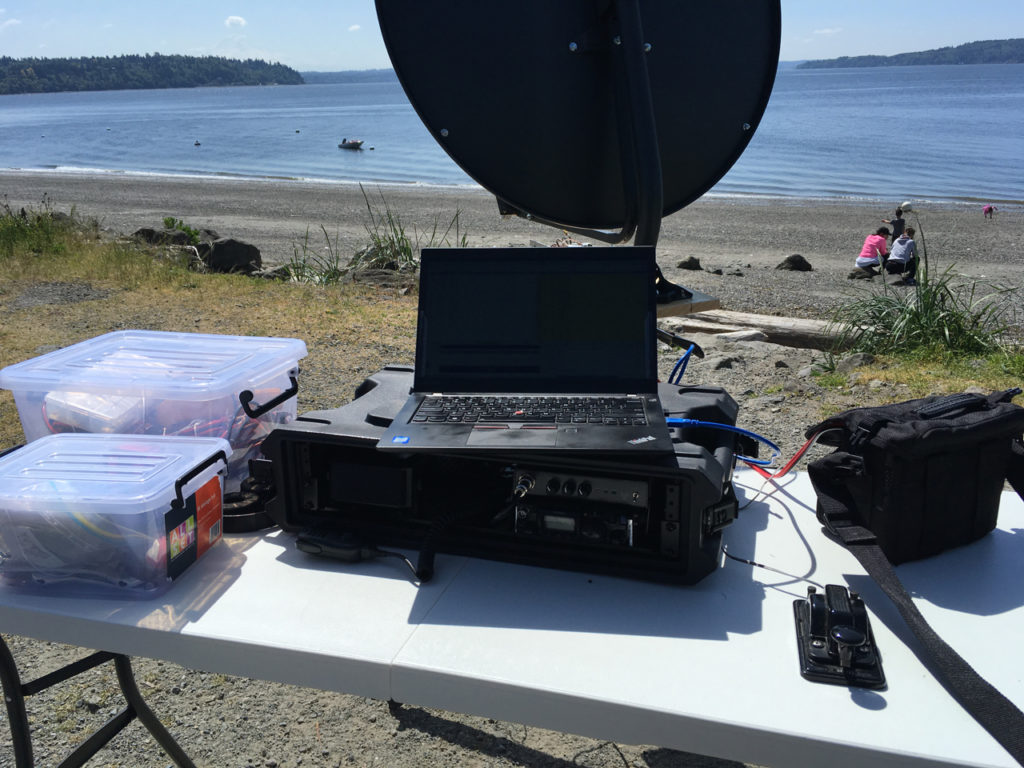
This was the first time I’d actually gotten out and used my 10GHz rig in the field and it was satisfying to see it all come together as a system.
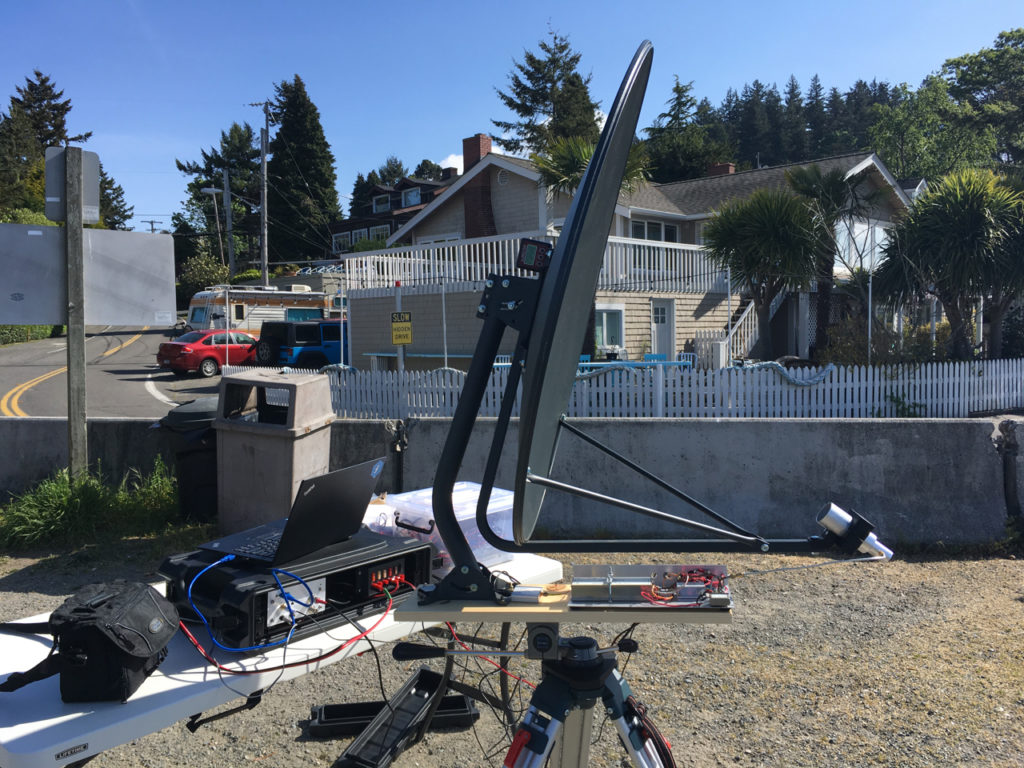
Microwave Update 2018
I was fortunate to travel to Dayton OH last weekend to attend Microwave Update 2018. I’ve been tinkering with microwave gear for a few years now, and this was my first time attending a microwave conference. It was inspiring to meet so many of the leading amateurs in this field, whose articles and projects provide so much critical information and know-how.
Highlights for me included:
- Brian Justin WA1ZMS talking about extending test equipment with mmWave mixers, including how to possibly repair them.
- Jeff Kruse WA3ZKR describing how he designed and built a DSN ground station (with a 2KW uplink and a cryogenic LNA).
- Barry Malowanchuk VE4MA talking about his 47 and 78 GHz systems.
- Paul Wade W1GHZ showing how he’s been building waveguides and horns for 47 GHz, utilizing machining resources at a maker space.
- Tom Williams WA1MBA describing his work on a mmWave multiplier with output around 47 GHz, with some of the hardware being made available as a kit (soon). This is to foster use of the 47 GHz band, which is under threat.
I’m now very keen to explore the world above 10 GHz. Stay tuned… 🙂
A PDF of the proceedings can be downloaded here, and photos of the event have been published on facebook.
10 GHz Transverter Rig Progress
I finally got around to hooking my 10 GHz transverter up to a dish.
This is a 90cm TV satellite dish, which was relatively inexpensive and easy to ship. I was looking for a 1.2m dish, but they are difficult to ship, and not worth it for me at this stage.
I’m using a survey tripod with a large Gitzo 3-way head (which I picked up a few months ago in Tokyo for cheap). The dish is mounted via a cut-down roof mount pole, to a piece of wood, as quick and dirty way to get the system together for evaluation. It’s not sturdy or accurate enough for serious use.
The transverter is locked to GPS via a Leo Bodnar mini-GPS frequency reference, powered here by a phone power bank via a USB cable. At some point I’ll add a 5V bus to the transverter.
I’m running 200 mW barefoot out of the transverter, with a dish gain of about 40 dBi, producing an EIRP in the order of 1KW.
The next step with this is to set up my beacon at home, then drive around seeing where and how far away I can pick it up with this dish setup. Or maybe even talk to someone.
